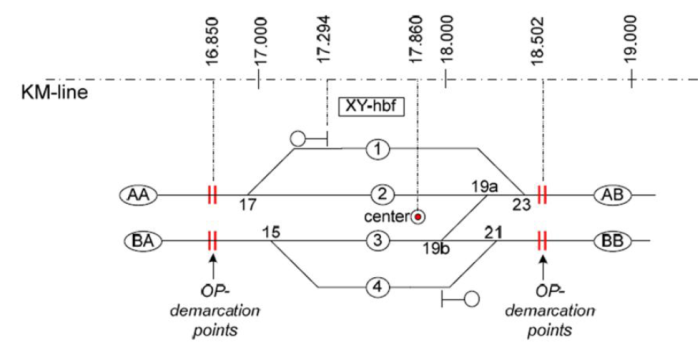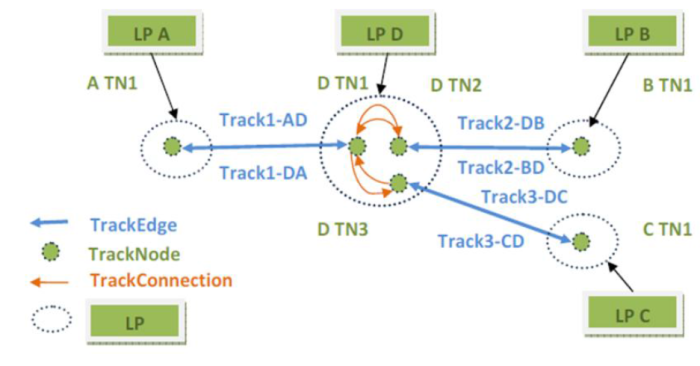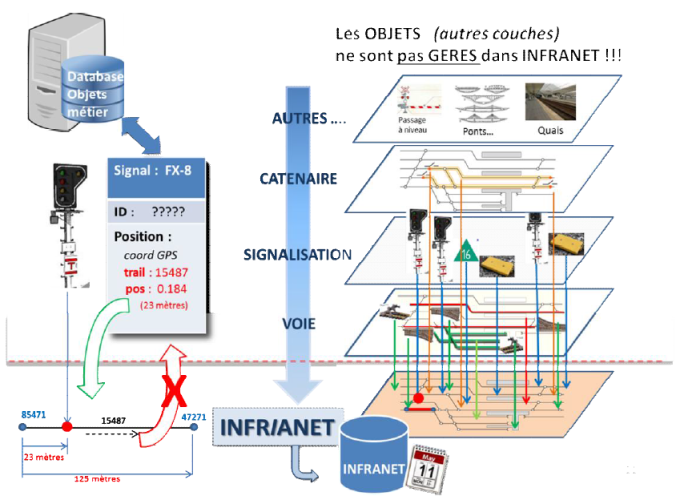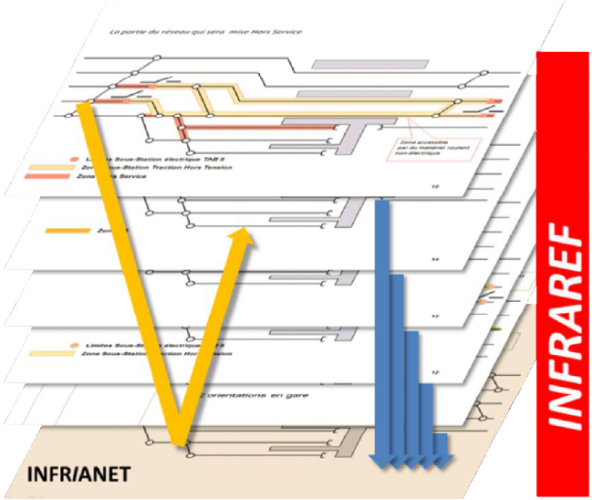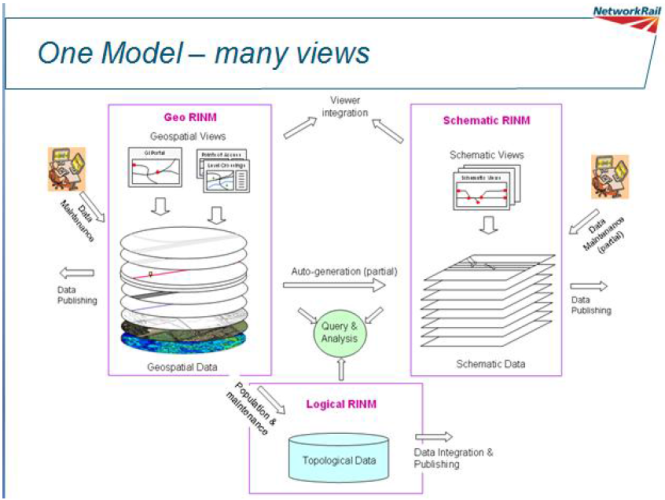RTM use cases and application examples
This page will concentrate on the RailTopoModel® Use Cases and Application Examples.
railML® (Data Exchange)
- →Main Article: railML® (Data Exchange)
Railway Infrastructure Manager Database
Many different topological infrastructure data models and interfaces have been created over the years, either to fulfill railway needs or to support EU directives. Indeed, in the absence of any commonly agreed standard for (international) data exchange each railway or EU initiative has been obliged to create its own data model and interface, often from scratches. Subsequently IMs are constantly requested to convert their data according to these different interfaces and data usages generating poor data quality and high data management costs.
Several topological data models have been investigated to understand their converging and diverging points. This analysis provides the basic understanding of the current state-of-art and the feasibility of a common data model in the future.
The following models have been considered in a more detailed manner:
Register of Infrastructure (RINF)|RINF (ERA)
The Register of Infrastructure (RINF) provides a general description of the rail networks witihin EU 28. National Register Entities (NRE) are requested to submit quarterly rail infrastructure data to ERA.
It uses a common XML interface and is currently under construction.
It supports routing at micro and macro level and makes use of both the Linear Reference System and the GPS Coordinate System.
- Member State dataset with validity period
France: ARIANE|ARIANE (SNCF Réseau, France)
- Purpose: General network description
- Interfaces: text, json, xml
- ARIANE Model: Connectivity graph (dual graph)
GAIA Database: One unique common database for all French railway businesses and activities. Multilevel and aggregation (tracks, lines, corridors, ...), supports technical components and characteristics, physical paths and logical routes, includes natively multi-referencing (geo, linear) and geometry, time scales and business segmentations.
InfraNet|InfraNet (Infrabel, Belgium)
- Purpose: General network description
- Interfaces: xml
- Specialty: Topology graph with node, each node has a detailed graph describing the driveable paths and is connected to the outside via ports
Banedata|Banedata (Jernbaneverket, Norway)
- Purpose: General network description ans maintenance of infrastructure objects
- Microscopic level
- Interfaces: xml (railML®), csv, xls; railML® interface is intended
- One common database containing information about all infrastructure objects (also in binary formats, e.g. drawings)
RINM|RINM (Network Rail, United Kingdom)
- Purpose: General network description
- Currently under development
- Interfaces: xml and others (via FME)
- Network graph based on track-centreline at micro level. Macro level being designed.
Use cases
The following use cases were identified and structured in a general framework.
| Interfaces\Field | Technical | Operational | Legal |
|---|---|---|---|
| Internal between departments | Standardised data exchange between technical departments (e.g. engineering + capacity allocation) often using different IT technologies and definitions ⇒ synergy effects |
Standardised data exchange between planning and monitoring of operations e.g. timetabling and real-time circulation tracking ⇒ synergy effects |
Improved monitoring of the network condition, via dedicated 'Dashboards' providing network data summaries ⇒ easier & faster data transfer and processing |
| National/Business between partners | Standardised data exchange between IMs and their business partners, such as ETCS suppliers and maintenance sub-contractors ⇒ savings in data production and transmission |
Standardised data exchange between IMs and RUs (e.g. for track possessions). ⇒ reduced operational costs |
Ability of RUs to determine permissible train characteristics (esp. braking) on any infrastructure, as required by EU legislation (esp. TSI OPE) ⇒ time savings, less errors |
| International between countries, organisations, EU | Standardised data model/exchange on which ETCS-, IT- and other industries can design their products ⇒ from taylor-made to inexpensive mass market solutions |
Standardised data exchange within corridors and between organisations (RNE, ...) ⇒ no need to develop multiple data conversion interfaces |
Standardised/unique data provision to legal obligations; NS, RINF, Inspire, EU Freight corridors, TEN-T network ⇒ Savings in data conversions and reduction of administrational burden |
| What you should have learned | |||
|---|---|---|---|
| Please, enter a summary! | |||
| Navigation | |||
| Home | ← | • | → |
| Chapter | RailTopoModel® External References | RailTopoModel® Use Cases and Application Examples | RailTopoModel® Model Extensions |
| Section | railML® (Data Exchange) | ||
| Subection | |||
